Research: Aesthetics & learning
Why Aesthetics?
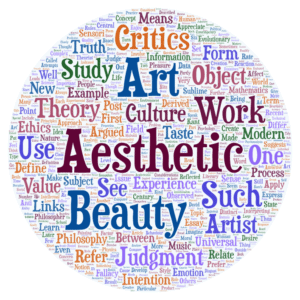
A child’s first experience, of peeking through a telescope to see the vivid sharply etched, yet fragile, rings of Saturn is a powerful one; perhaps as powerful as standing amidst redwood trees listening to the sound of wind rustling through the leaves or experiencing a moment of clarity when an elegant geometrical proof, surprising in its simplicity, emerges from a chaos of sketches and doodles. It is in this sense of awe and wonder that our minds nibble at confronting powerful ideas such as infinity (whether the infinity of numbers, or the interminably large scale of the cosmos, or the immeasurably small universe of cells and atoms and quarks). The emotional turbulence that overwhelms us when we reflect on nature, truly understand a scientific idea, or solve a tricky mathematical or engineering problem often leads to powerful aesthetic experiences. These experiences, we argue, are no different or less than the aesthetic experience we have in engaging with powerful artistic human creations, be it music or the visual arts.
That said, the role of the aesthetic has often been ignored in the discussion on learning. And I truly believe that is a huge mistake on our part.
On designing aesthetic educational
experiences in science
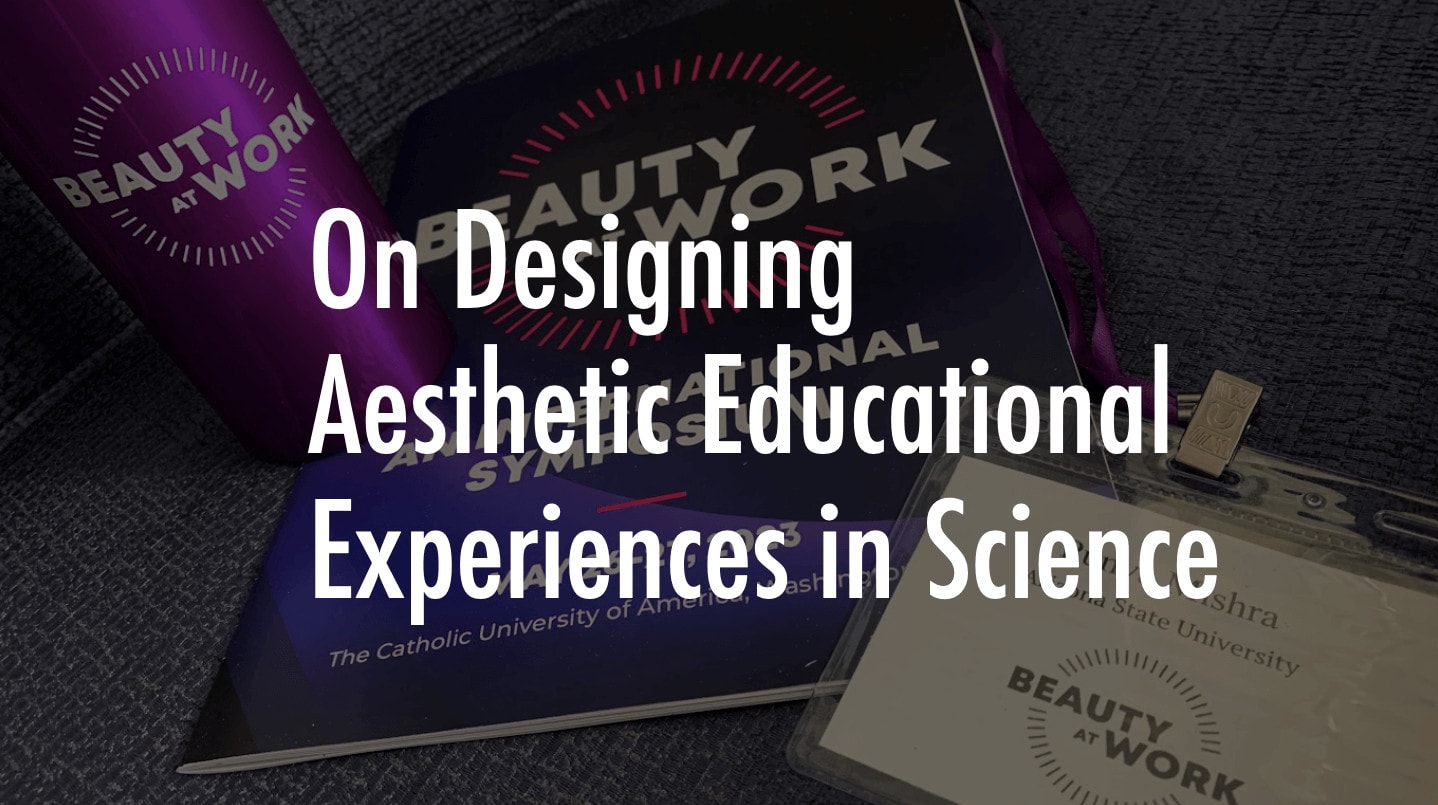
I was invited to give a presentation on this topic at conference titled Beauty at Work: An International Symposium at the Catholic University of America, in Washington DC (May 2023). I was part of a session on Aesthetic Properties and Scientific Information, along with Myron Penner (a philosopher of science from Trinity Western University); Amanda Nichols (professor of chemistry from Oklahoma Christian University); Milena Ivanova (from Fitzwilliam College, Cambridge); and Rebecca Kamen (artist in residence at the University of Pennsylvania). More details about the conference and a video of my talk (On designing aesthetic educational experiences in science) can be found here.
Aesthetics & coding
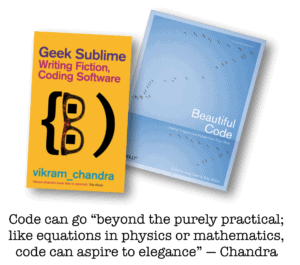
Does beauty have a role to play in learning to code? Can code aspire to beauty and elegance? In this article (Good, Keenan, & Mishra, 2016, titled Education:=Coding + Aesthetics), we argue that it does and it should.
Mathematical poetry
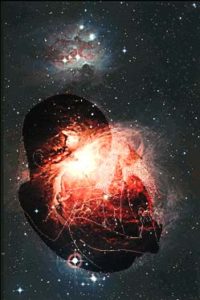
What does mathematics have to do with poetry? Not much, at one level, but a lot at another. Though their goals may be different, both mathematicians and poets play with structure and form, seek elegance and parsimony in their work. And in their own way they strive for truth and beauty—defined within the rules and structures of their discipline. I have loved both mathematics and poetry – with little or no success in each. But over the years I have played little games with both and some of these explorations are presented here.
Why aesthetics is essential (for science education)
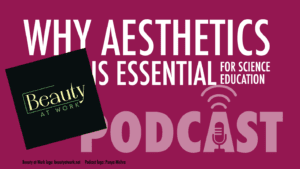
Beauty at Work is a podcast that “explores how beauty shapes our lives and the work that we do” hosted by Brandon Vaidyanathan, Associate Professor of Sociology at The Catholic University of America. In its first season the focus is on beauty in science. As part of this series, Brandon has spoken with physicists, philosophers, psychiatrists, neuroscientists, entrepreneurs, psychologists and more. I was lucky to be a guest on this podcast, in an episode titled: Why Aesthetics is Essential for Science Education.
Why Teachers should care about beauty
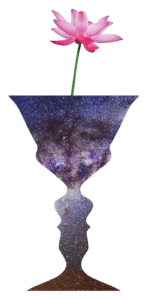
In the article for the journal iWonder (Why teachers should care about beauty in science) – we explored the role of beauty in science education. In this piece, targeted at science educators, we use research in science education to highlight the importance of teachers consciously making connections to aesthetic aspects of science. Caring about beauty in science can inspire a sense of wonder and curiosity.
Aesthetics and STEM education
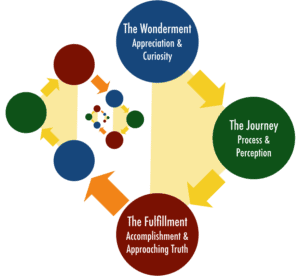
Developing a Rhetoric of Aesthetics: The (Often) Forgotten Link Between Art and STEM is an article that digs into these ideas in depth. In essence, this article is an extended argument that builds on several lines of work including philosophy, psychology, history and biography, in order to promote a model of learning based on aesthetic ways of knowing, thinking, and exploring the world. This emphasizes key impulses that make us human. We provide a generative three-fold fractal framework that seeks to capture the entire cycle of engaging in STEM practices: from curiosity to the process of seeking answers, to a sense of completion that in turn leads to new curiosities to explore. We suggest that this leads to a powerful virtuous cycle that seeks to maintain the same sequence at different levels of learning—from the beginner to the professional scientist, mathematician, or engineer.
Of Art & algorithms
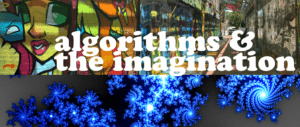
In a couple of articles (most importantly Mishra & Yadav, 2013 and Evans, Henriksen, & Mishra, 2019) we argue that the partnership of deep human content knowledge with new technological advances can lead to deeper and more profound creative insights. We explore how computational thinking, combined with deep knowledge of a discipline, can lead to creative solutions that could not have been possible before. Thus the creative output is not determined by only the individual or the technology, but rather through a “partnership” between the two.
Blog posts related to aesthetics, beauty and learning
You have been terminated: A case for humane design
Good design cares about details. Good design is humane. Bad design is neither. Designers must bring this attention to detail and humanity to every aspect of their work. And this applies even the invisible parts. This, caring for the "invisible" details, is captured in...
Vinit Masram (1988 – 2023)
I found out about Vinit Masram's passing a week or so go. I did not know Vinit personally, having met him just once, at IDC's Golden Jubilee celebrations in 2020. But the news of his death hit me hard. I had been a fan of his work for a long time - having stumbled on...
Artificial Intelligence, Math / Truth & other ambigrams
Lovers of mathematics relish challenges, enjoying the manipulation of numbers and geometrical figures, seeking and creating patterns. Their fascination sometimes extends into language and other seemingly unrelated domains. An intriguing example of visual wordplay,...
Creativity, AI & Education: A Reflection & an Example
Update (added March 17, 2024): There are a few more instances of using GenAI in creative ways that I would like to add to the list below, in particular 2 posts about using the the image analysis capabilities for ChatGPT: When AI can see and Total eclipse of the sun...
Wine + GPT4 + Code Interpreter: WOW!!
OpenAI just released Code Interpreter. It allows you to execute Python code within a live working environment. One of the things that it allows us to do is take data files and conduct data analysis and create graphs and charts. Not knowing what that meant I decided to...
The joy of learning: A reflection
What is this thing called learning? What does it mean to learn something? What makes us want to learn? Why is it fun? Why do we want to know? Even as educators, we often don't take the time to ask ourselves these foundational questions. So it is rewarding when we get...
It Takes Two: A (personal) exploration
I had written earlier about a contest organized by Dark ‘n’ Light (an e-zine) around the theme of "IT TAKES TWO" and had shared some of my experiments, exploring this theme, using Generative AI. You can see my experiments at: It takes two: A scientific romp using AI...
It Takes Two: A scientific romp using AI
Dark 'n' Light is an e-zine that "explores science, nature, social justice and culture, through the arts and humanities." It is a labor of love by a small, dedicated team led by Susan Matthews, former legal and policy wonk, turned editor and podcaster. I came to know...
6 Videos (on the 5 spaces for design in Education)
Learning Sparks is a new initiative at ASU that feature short, 5-minute, videos showcasing the expertise of a range of ASU faculty members. These videos are carefully crafted, with high-production values seeking to capture big ideas in bite-sized chunks. A few months...
Talk at Fulton School of Engineering
Last August I was invited to speak at an event organized by the Ira Fulton School of Engineering's Learning and Teaching Hub. For some reason I had not posted about it — so better late than never... here it is, a 30 min talk followed by QnA....
On designing aesthetic educational experiences in science
What is the role of beauty (and aesthetics) in science in science education? This is something that I have been interested in for a long time, going back to highschool. Over the years I have built a small body of scholarship around this topic. Sadly, this work does...
Coding with ChatGPT3: On gaining a superpower
I had heard that ChatGPT3 could help with writing code and just hadn't much time to play with it. Part of the reason is that I haven't really coded in almost 2 decades (maybe more) so was somewhat hesitant to jump in. But again I kept reading of people doing amazing...
Scaling up the SCALE Instrument
Back in 2017, Carmen Richardson and I wrote an article (Richardson & Mishra, 2017) in which we proposed an instrument (Support of Creativity in Learning Environment: SCALE) designed to assess the ways in which a learning environment supports student...
Krishnamurti & Dewey in the Metaverse
I am writing a paper with Marina Basu about how John Dewey's and Jiddu Krishnamurti's philosophies of education and their implications for learning in increasingly mediated environments. While working on the paper, it struck me that it may be fun to see what Bing Chat...
Bringing Design to Education: Benjamin Cluff Jr. Lecture at BYU McKay School of Education
I was recently invited to present the Benjamin Cluff Jr. Lecture by the dean and faculty at the Brigham Young University, McKay School of Education. I had a short but lovely visit, meeting old friends, and making new ones. We had some wonderful conversations, over...
